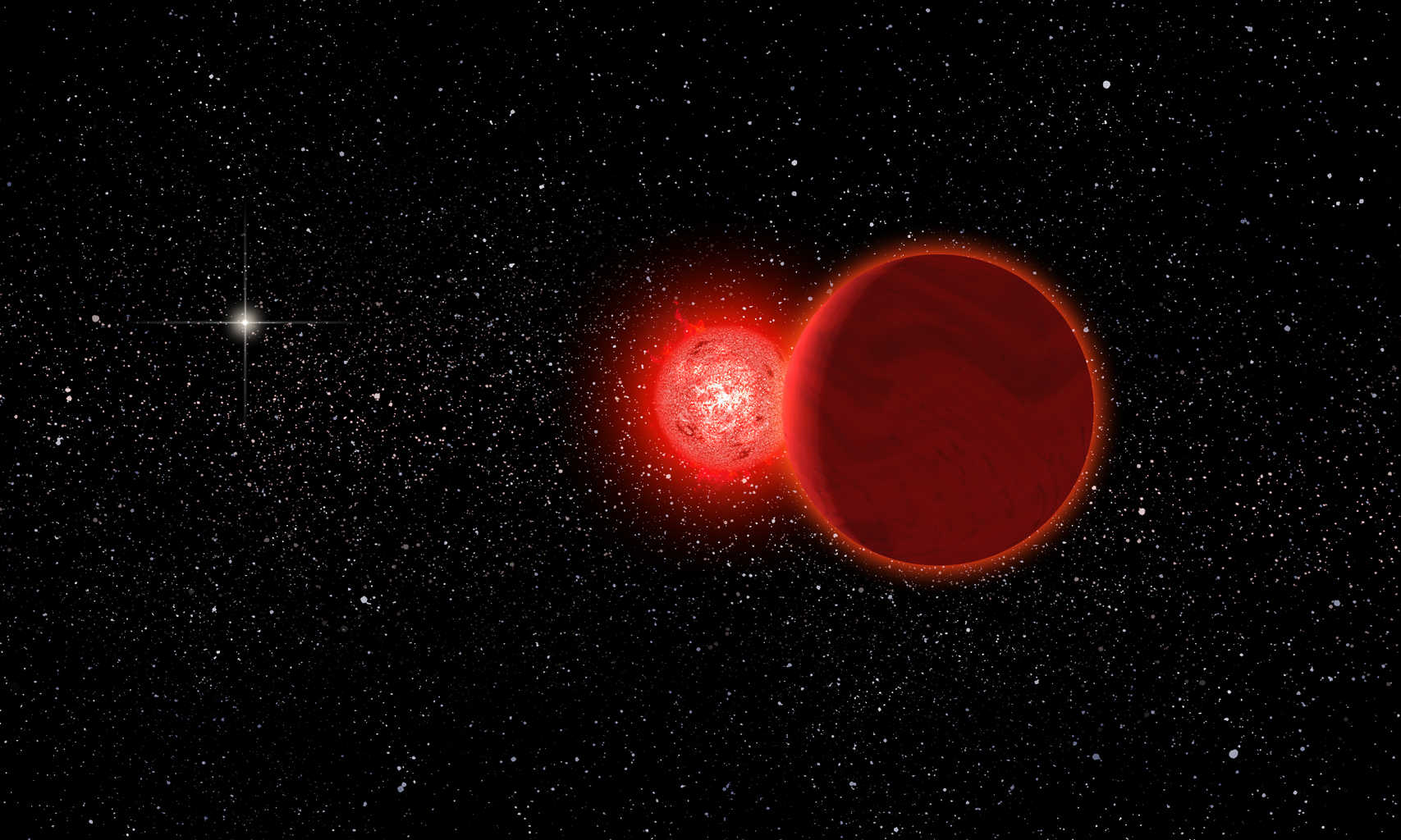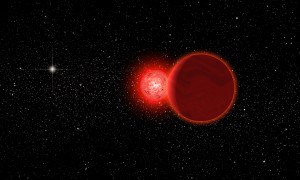
 Astronomers have identified the closest known flyby of a star to our solar system: a dim star that passed through the Oort Cloud about 70,000 years ago, coming within 0.8 light years of the Sun.
Astronomers have identified the closest known flyby of a star to our solar system: a dim star that passed through the Oort Cloud about 70,000 years ago, coming within 0.8 light years of the Sun.
A group of astronomers from the U.S., Europe, Chile and South Africa have determined that a recently discovered dim star is likely to have passed through the solar system’s distant cloud of comets, the Oort Cloud. No other star is known to have ever approached our solar system this close—five times closer than the closest star, Proxima Centauri.
In a paper published in Astrophysical Journal Letters, lead author Eric Mamajek from the University of Rochester and his collaborators analyzed the velocity and trajectory of a low-mass star system nicknamed “Scholz’s star.”
The star’s trajectory suggests that 70,000 years ago it passed roughly 0.8 light years (5 trillion miles) from the Sun. This is astronomically close—our closest neighbor star today, Proxima Centauri, is 4.2 light years distant. In fact, the astronomers are 98% certain that it passed through what is known as the “outer Oort Cloud”—a region at the edge of the solar system filled with trillions of comets a mile or more across that are thought to give rise to long-period comets orbiting the Sun after their orbits are perturbed.
The star originally caught Mamajek’s attention during a discussion with co-author Valentin D. Ivanov, from the European Southern Observatory. Scholz’s star had an unusual mix of characteristics: despite being fairly close (only 20 light years away), it showed very slow tangential motion, that is, motion across the sky. The radial velocity measurements taken by Ivanov and collaborators, however, showed the star moving almost directly away from the solar system at considerable speed.
Mamajek worked with former University of Rochester undergraduate Scott Barenfeld (now a graduate student at Caltech) to simulate 10,000 orbits for the star, Of those simulations, 98% showed the star passing through the outer Oort cloud, but fortunately only one of the simulations brought the star within the inner Oort cloud, which could trigger so-called “comet showers.”
While the close flyby of Scholz’s star likely had little impact on the Oort Cloud, Mamajek points out that “other dynamically important Oort Cloud perturbers may be lurking among nearby stars.” The recently launched European Space Agency Gaia satellite is expected to map out the distances and measure the velocities of a billion stars. With the Gaia data, astronomers will be able to tell which other stars may have had a close encounter with us in the past or will in the future.
Currently, Scholz’s star is a small, dim red dwarf in the constellation of Monoceros the Unicorn, about 20 light years away. At the closest point in its flyby of the solar system, Scholz’s star would have been a 10th magnitude star—about 50 times fainter than can normally be seen with the naked eye. It is magnetically active, however, which can cause stars to “flare” and briefly become thousands of times brighter. So it is possible that Scholz’s star may have been visible to the naked eye by our ancestors 70,000 years ago for minutes or hours at a time during rare flaring events.
The star is part of a binary star system: a low-mass red dwarf star (with mass about 8% that of the Sun) and a “brown dwarf” companion (with mass about 6% that of the Sun). Brown dwarfs are considered “failed stars”; their masses are too low to fuse hydrogen in their cores like a star, but they are still much more massive than gas giant planets like Jupiter.


Be the first to comment